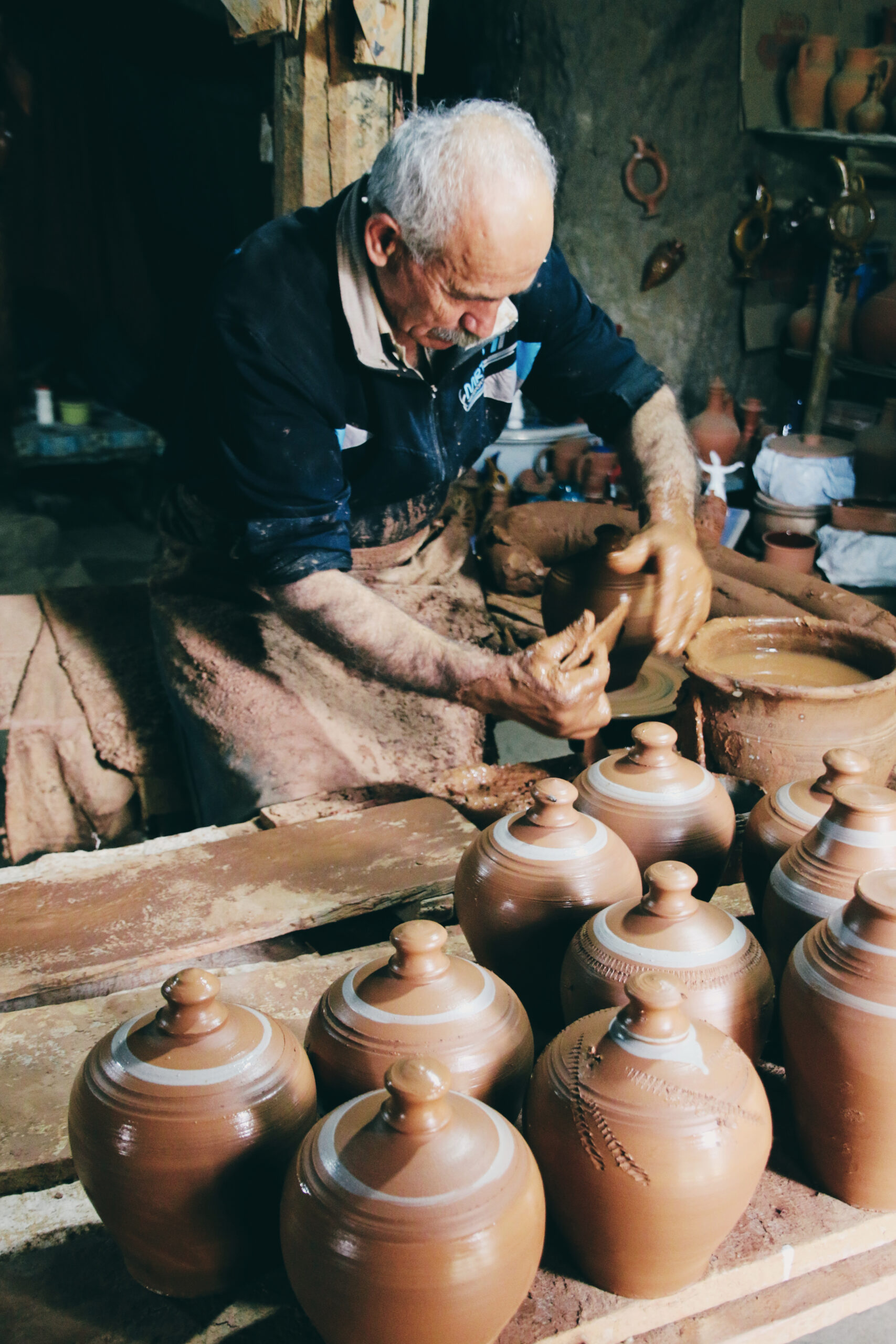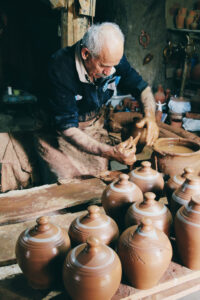If you’re someone who loves to cook, then you understand the importance of having the right tools in your kitchen. And when it comes to saucepans for gas hobs, finding the perfect one can make a world of difference in your cooking experience. With so many options out there, it can be overwhelming to know which saucepan is truly the best. That’s why we’ve gathered some valuable information to help you make an informed decision. From the materials used to the size and functionality, we’ll guide you through the process of finding the best saucepan that will perfectly complement your gas hob cooking style. So let’s dive in and discover the saucepan that will make your kitchen truly shine!

This image is property of images.pexels.com.
Factors to Consider for Gas Hob Saucepan Selection
When it comes to selecting saucepans for your gas hob, there are several important factors that you should consider. Choosing the right material, base thickness, size and capacity, handles and lids, compatibility with gas hobs, heat distribution, durability, maintenance, brand reputation, and price range can greatly impact your cooking experience. By understanding these factors and making informed decisions, you can ensure that you invest in saucepans that meet your cooking needs and preferences. Let’s delve into each of these factors in more detail.
Different Materials for Gas Hob Saucepans
The material of your saucepans plays a crucial role in terms of its performance, durability, and even its appearance. Here are some common materials used in gas hob saucepans:
Stainless Steel
stainless steel saucepans are a popular choice due to their durability, heat resistance, and non-reactive properties. They are easy to clean and maintain, and their sleek appearance adds a touch of elegance to your kitchen. However, stainless steel saucepans may not have the best heat conductivity, so it is essential to consider their base thickness for even heat distribution.
Copper
Copper saucepans are renowned for their excellent heat conductivity, which allows for precise temperature control during cooking. The superior heat responsiveness of copper makes it ideal for delicate sauces and dishes that require precise cooking temperatures. However, pure copper saucepans can be quite expensive, so consider opting for copper-clad or copper-core pans for a more cost-effective solution.
Cast Iron
cast iron saucepans are known for their exceptional heat retention and distribution. They can withstand high temperatures and are perfect for slow cooking methods like braising and stewing. Cast iron saucepans also develop a natural non-stick surface over time. However, they can be quite heavy and require proper maintenance to prevent rusting.
Aluminum
Aluminum saucepans offer excellent heat conductivity, ensuring even heat distribution across the cooking surface. They are lightweight and affordable, making them a popular choice for many home cooks. However, aluminum is a reactive metal, so anodized or non-stick coated aluminum saucepans are recommended to prevent any undesirable reactions with acidic ingredients.
Base Thickness and Heat Conductivity
The thickness of the saucepan’s base is an essential factor to consider, as it affects heat conductivity and distribution. A thicker base generally provides better heat retention and distribution, resulting in more even cooking. When it comes to gas hob saucepans, where precise temperature control is crucial, a saucepan with a thicker base is advantageous.
Different materials have varying heat conductivity properties. Copper, for example, has excellent heat conductivity, ensuring rapid and precise heat distribution. Stainless steel and aluminum come next in terms of heat conductivity, while cast iron has lower heat conductivity but excels in heat retention. Considering the material’s heat conductivity and the base thickness will help you determine the right saucepan for your gas hob cooking needs.
Ideal Size and Capacity for Gas Hob Saucepans
When selecting saucepans for your gas hob, it is essential to consider their size and capacity. The ideal size will depend on your cooking needs as well as the available stovetop space. Here are a few factors to consider:
Consider Cooking Needs
Think about the types of dishes you frequently prepare and the quantities you typically cook. If you often cook for a larger family or enjoy hosting dinner parties, larger capacity saucepans may be more suitable. Conversely, if you tend to cook smaller meals or have limited storage space, opting for smaller saucepans might be more practical.
Available Stovetop Space
Take into account the number of burners on your gas hob and the surface area of each. If you have limited space or frequently use multiple burners simultaneously, it may be more convenient to choose a set of saucepans that nest inside each other for compact storage. This will free up valuable workspace and make cooking more efficient.

This image is property of images.pexels.com.
Handles and Lids for Convenient Usage
The convenience and usability of saucepans largely depend on their handles and lids. Consider the following factors when evaluating handles and lids for gas hob saucepans:
Comfortable and Heat-Resistant Handles
Look for saucepans with sturdy and ergonomic handles that provide a comfortable grip. Heat-resistant handles are crucial to prevent burns when handling hot saucepans. Silicone-coated or stay-cool handles are especially beneficial as they minimize heat transfer from the pan.
Well-Fitted and Heat-Trapping Lids
The lid of a saucepan should fit securely, ensuring that it traps heat and moisture inside the pan. This is particularly important when cooking dishes that require steaming or simmering. A well-fitted lid helps retain heat, reduces cooking time, and enhances the overall cooking experience.
Compatibility with Gas Hobs
To ensure optimal cooking performance, it is important to consider the compatibility of your saucepans with gas hobs. Here are a couple of factors to keep in mind:
Flat Bottoms for Optimal Heat Transfer
Gas hobs typically have open flames that provide direct heat to the bottom of the saucepan. For efficient heat transfer, it is essential to choose saucepans with flat bottoms. Flat-bottomed saucepans ensure maximum contact with the gas flame, resulting in more efficient cooking.
Avoid Non-Stick Coated Pans
Non-stick coated saucepans are not recommended for gas hobs as the intense heat generated by the flames may damage the non-stick coating. Opt for stainless steel, copper, cast iron, or aluminum saucepans that are designed for use on gas hobs and can withstand high temperatures.

This image is property of images.pexels.com.
Heat Distribution for Proper Cooking
Even heat distribution is key to achieving perfectly cooked meals. Uneven distribution can lead to hot spots, causing certain areas of the pan to overcook while others remain undercooked. Consider the following:
Even Heat Distribution across the Pan
Choose saucepans with materials that offer excellent heat distribution properties. Copper and aluminum are known for their superior heat conductivity, ensuring even heat distribution across the entire pan’s surface. Stainless steel pans with an aluminum or copper core can also provide excellent heat distribution.
Avoid Hot Spots
Thicker bases and materials with good heat conductivity help minimize the occurrence of hot spots. Pay attention to customer reviews and manufacturer specifications to ensure that the saucepan you choose has a reputation for even heat distribution.
Durability to Withstand Gas Hob Cooking
Gas hob cooking can be quite demanding on saucepans, so durability is a crucial factor to consider. Here’s what you should keep in mind:
Scratch and Warp Resistance
Select saucepans that are resistant to scratches and warping. Stainless steel and cast iron saucepans are generally known for their durability. Avoid using metal utensils that may scratch the surface of non-stick pans, as scratches can impact their longevity.
Ability to Withstand High Temperatures
Gas hobs generate intense heat, so it is important to choose saucepans that can handle high temperatures without warping or damage. Materials like stainless steel, cast iron, and copper are known for their ability to withstand high cooking temperatures.
Maintenance and Cleaning
Maintenance and cleaning are essential considerations for any cookware. Here are a few factors to think about when it comes to gas hob saucepans:
Ease of Cleaning
Choose saucepans that are easy to clean and maintain. Stainless steel saucepans are generally dishwasher safe and can be cleaned easily by hand as well. Non-stick coated saucepans require gentle handwashing to avoid damaging the coating.
Dishwasher Compatibility
Consider whether dishwasher compatibility is essential to you. Some saucepans are safe to be cleaned in the dishwasher, while others may require handwashing. Check the manufacturer’s instructions to ensure that you choose saucepans that align with your preferred cleaning method.
Consideration of Budget and Price Range
While quality saucepans can be a worthwhile investment, it’s important to consider your budget and preferred price range. Here are a couple of tips:
Settle on an Appropriate Budget
Determine the amount you are willing to spend on a set of saucepans for your gas hob. Consider the long-term value and durability of the saucepans when deciding on your budget. Keep in mind that higher-quality materials and reputable brands may come at a higher cost.
Compare Prices and Features
Research different brands and compare prices and features to find the best value for your money. Look for promotions or discounts that may be available to help you stay within your budget.
By considering all these factors, you can confidently choose the best saucepans for your gas hob that will elevate your cooking experience and help you create delicious meals with ease. Happy cooking!

